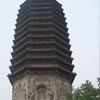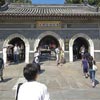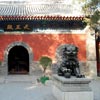Medieval period
15:00 19-1-2010 Peking Culture
In 936, the Later Jin Dynasty (936-947) of northern China ceded a large part of its northern frontier, including modern Beijing, to the Khitan Liao Dynasty. In 938, the Liao Dynasty set up a secondary capital in what is now Beijing, and called it Nanjing (the "Southern Capital"). In 1125, the Jurchen Jin Dynasty conquered Liao, and in 1153 moved its capital to Liao's Nanjing, calling it Zhongdu (中都), the "central capital."[1] Zhongdu was situated in what is now the area centered around Tianningsi, slightly to the southwest of central Beijing. Some of the oldest existing relics in Beijing, such as the Tianning Temple, date to the Liao. Mongol forces burned Zhongdu to the ground in 1215.[22] Later in 1264, in preparation for the conquest of all of China to establish the Yuan Dynasty, Kublai Khan decided to rebuild it slightly north to the center of the Jin capital,[23] and in 1272, he made this city his capital as Dadu (大都, Chinese for "great capital"),[22] or Daidu to the Mongols, otherwise spelled as Cambaluc or Cambuluc in Marco Polo's accounts. Construction of Dadu finished in 1293.[1] The decision of Kublai Khan greatly enhanced the status of a city that had been situated on the northern fringe of China proper. The center of Dadu was situated slightly north of modern central Beijing. It centered on what is now the northern stretch of the 2nd Ring Road, and stretched northwards to between the 3rd and 4th Ring Roads. There are remnants of the Yuan-era wall still standing, and they are known as the Tucheng (土城 literally, the 'earth wall').






